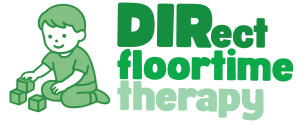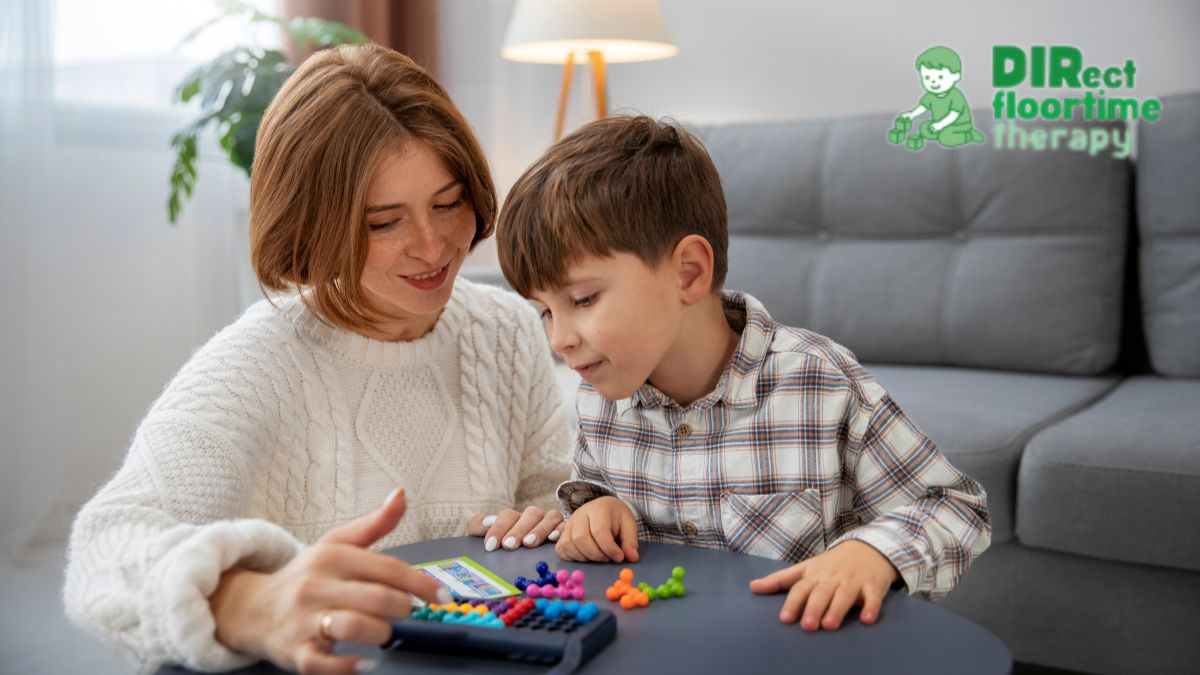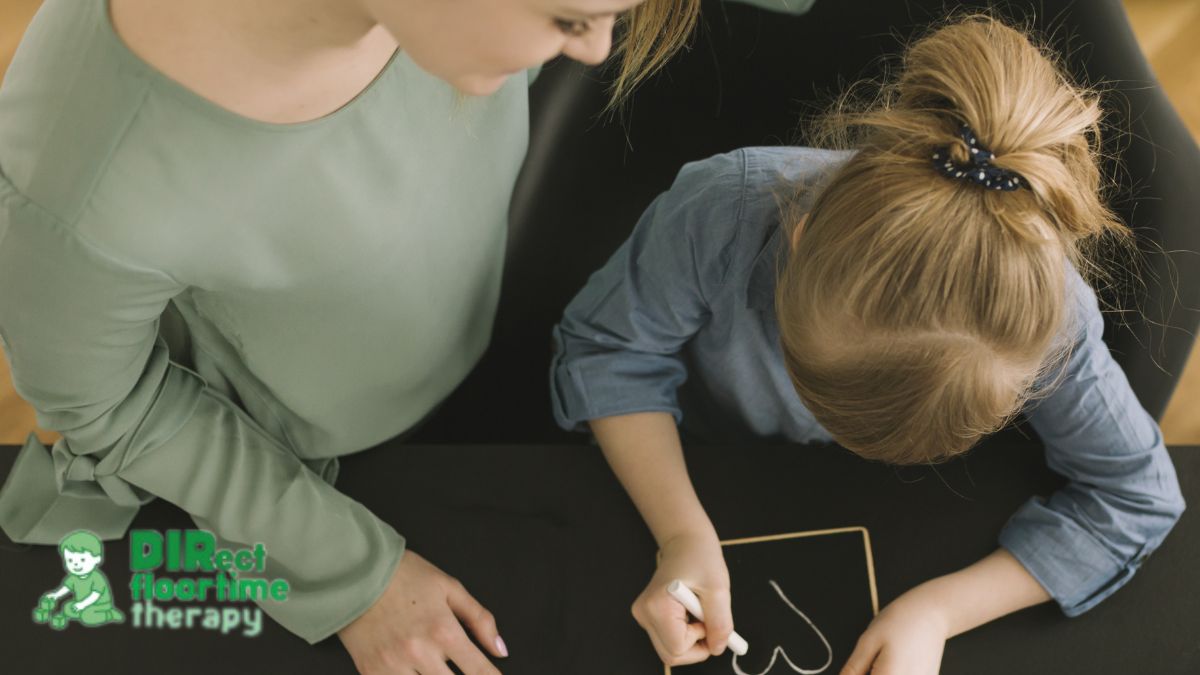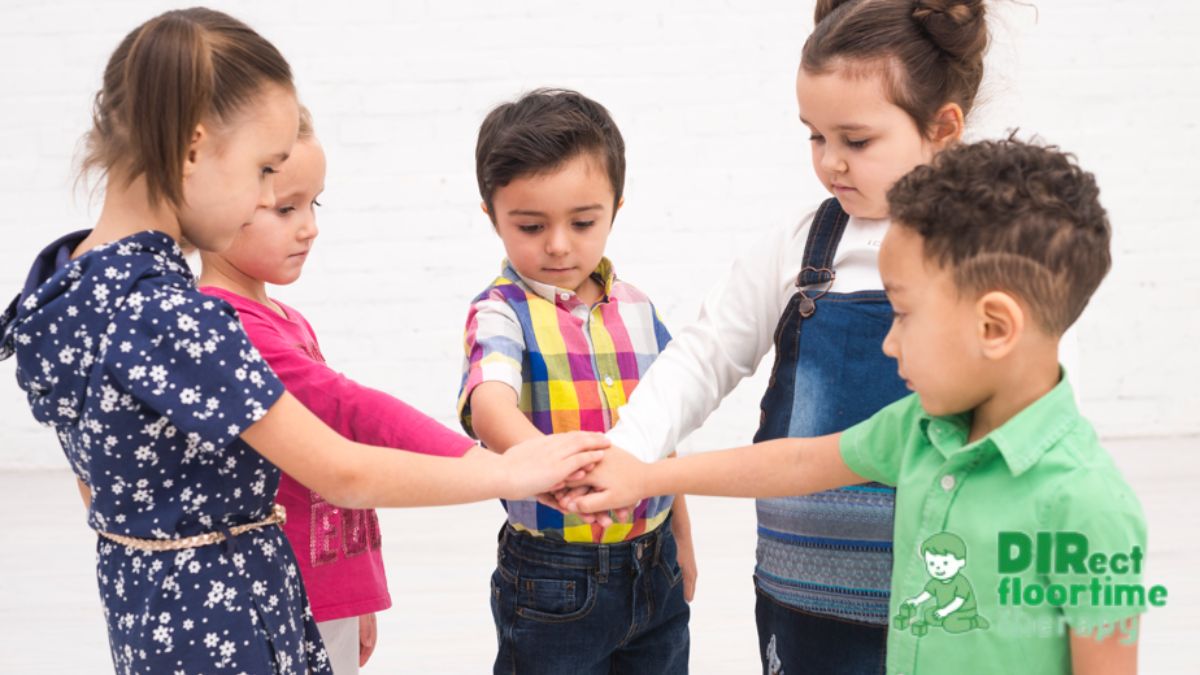Key Points:
- DIR Floortime uses play and relationships to build communication, imagination, and emotional skills.
- Six developmental levels guide children from shared attention to complex thinking.
- Research shows improvements in social connection, emotional regulation, and parent-child bonding.
When it comes to autism therapy, one approach has captured attention for its unique blend of play, emotion, and connection—the DIR Floortime model. This child-led method takes therapy off the chair and onto the floor, where imagination and relationships drive growth. Instead of focusing only on isolated skills, it nurtures the emotional and social foundations that make communication and learning possible.
So what makes the Floortime approach different? How do children actually benefit? And why are so many families and therapists turning to this model for long-term progress? Let’s break it down step by step—without jargon, with clear examples, and in a way that brings the science to life.
DIR Floortime Model: What Is It for Autism?
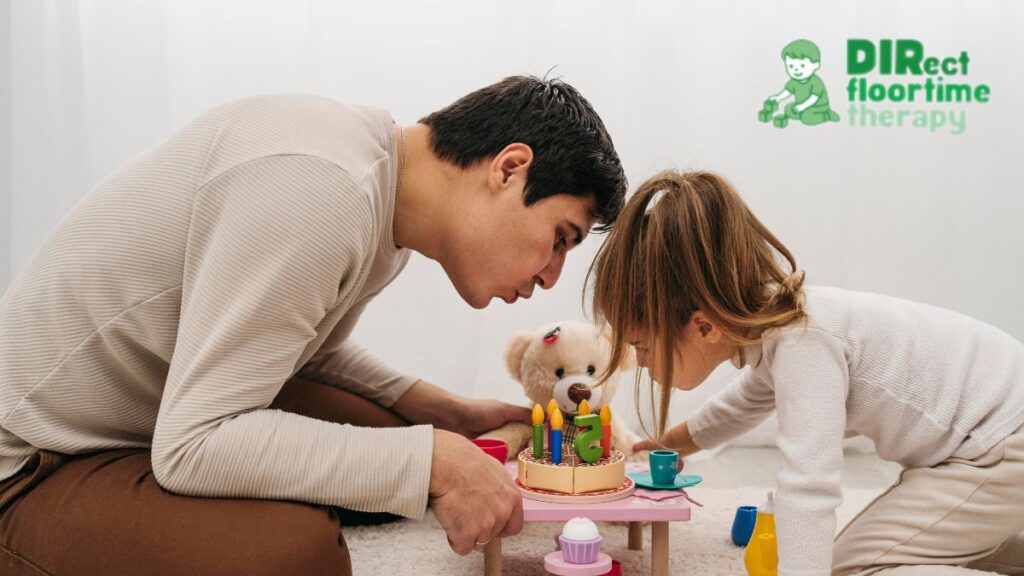
At its core, the DIR Floortime model is all about following the child’s lead. Instead of telling them what to do, the therapist or parent joins the child’s world of play. This creates a safe space where real growth can begin.
The acronym “DIR” stands for:
- Developmental: building skills in a sequence, starting with basics like shared attention, then moving toward problem-solving and abstract thinking.
- Individual differences: respecting how each child processes sights, sounds, movement, or touch.
- Relationships: using trusted connections as the springboard for learning.
Emotion is often called ‘the engine of development.’ That’s why DIR Floortime sessions aren’t just play—they’re purposeful interactions that strengthen bonds, spark curiosity, and open new ‘circles of communication.
Research highlight: A 2012 study by Pajareya and Nopmaneejumruslers in Thailand tested home-based DIR therapy for three months. Children who received 15 hours per week showed marked improvement in emotional and social capacities compared to peers (Pajareya & Nopmaneejumruslers, Autism, 2012).
Now let’s explore how this works in practice.
DIR Floortime Levels: Real-Life Examples
The model is built around six functional emotional development levels. Think of them as steppingstones. Each level gives children the foundation to tackle the next.
| DIR Floortime Level | Focus | Example in Action |
| 1. Shared Attention | Being alert, calm, and ready to connect | A child looks at you when you roll a ball their way. |
| 2. Engagement | Building warm, trusting bonds | Smiling back when you make a funny face |
| 3. Two-Way Communication | Taking turns with gestures or actions | Child stacks blocks, you clap, they giggle and keep stacking. |
| 4. Complex Communication | Longer back-and-forth play | The child pretends to cook, you “taste” the food, and they laugh and serve more. |
| 5. Emotional Ideas | Using imagination in play | Child turns a toy car into a spaceship and tells you about it. |
| 6. Emotional Thinking | Linking ideas logically | Child explains why the “spaceship” must rescue dolls before bedtime. |
Real-life story: In a case study reported by Greenspan and Wieder (2003), a boy named Joey began with limited engagement. After consistent Floortime, his play evolved into creative stories with multiple characters. His parents noticed more emotional connection at home, too.
Each small step—like eye contact or playful turn-taking—lays the groundwork for complex thinking later.
Floortime Approach: How Is It Different?
So how does the Floortime approach stand apart from other autism therapies?
- Child-led vs. therapist-led: Instead of structured drills, children set the direction. This keeps motivation high.
- Emotion as the driver: Traditional models may target isolated behaviors. Floortime taps into joy, curiosity, and relationships to fuel growth.
- Whole child focus: It’s not just about speech or motor skills—it’s about social-emotional development, sensory regulation, and flexible thinking.
Evidence check: A systematic review published in 2023 (Divya et al., Engaging Autism) analyzed multiple Floortime studies. While larger randomized trials are still needed, results point toward gains in parent-child interaction, communication, and daily living skills.
So, while the science is still evolving, many families and therapists already see real progress.
Benefits of DIR Floortime Therapy

What happens when a child participates in regular Floortime sessions? Studies and lived experiences point to several key benefits:
- Boosts social communication—Children learn to take turns, share attention, and eventually hold conversations.
- Encourages emotional regulation—Play becomes a safe lab for expressing joy, frustration, or curiosity in healthy ways.
- Supports imagination and problem-solving – Pretend play teaches creativity, flexible thinking, and even early storytelling.
- Strengthens bonds—By following the child’s lead, parents often feel more connected, reducing stress at home.
- Adapts across ages—Whether a toddler or a teen, Floortime meets them where they are.
In a 10-week home program (Solomon et al., Journal of Developmental & Behavioral Pediatrics, 2007), parents who practiced Floortime daily reported big jumps in their children’s ability to connect, respond, and express emotions.
Isn’t that the kind of progress every family hopes for?
Implementing Floortime Anytime, Anywhere
The beauty of the Floortime model is its flexibility. It doesn’t have to stay in a clinic. Parents and therapists can weave it into daily routines:
- At home: Turn snack time into a mini game of choices—“Do you want the red cup or the blue one? ” That small step sparks communication.
- On walks: Pause to explore a flower, then wait for the child’s reaction. Follow their curiosity wherever it leads.
- During errands: Use grocery shopping to practice greetings, pointing, or naming.
Every interaction becomes a chance to grow.
Research Backing the Floortime Approach
Science has taken a closer look at how effective DIR therapy for autism can be.
- Greenspan & Wieder (1997): Out of 200 children in long-term Floortime programs, 58% achieved “good to outstanding” progress, measured by developmental milestones.
- Pajareya et al. (2012): Children with daily home-based Floortime improved more than peers on emotional regulation and interaction skills.
- Solomon et al. (2007): Parent-delivered Floortime led to measurable increases in social skills in just 10 weeks.
While researchers continue to call for more randomized trials, the consistent thread is clear: engaging children through relationships fuels steady progress.
Key Techniques in Practice
Want to visualize a floor therapy autism session? Here are three simple techniques therapists and parents often use:
- Join their play: If your child spins a toy car, grab another car and spin along. This says, “I see you.”
- Expand gently: Once they’re engaged, introduce a twist. Maybe your car races theirs. That opens new circles of communication.
- Stay emotional: Celebrate wins with laughter, facial expressions, or silly voices. Emotions make moments stick.
This playful yet purposeful approach is why many call Floortime more than therapy—it’s connection in action.
How Sensory Needs Fit In
Children with autism often process sights, sounds, or textures differently. The Floortime approach adapts to these sensory differences.
- A child who seeks movement may thrive with bouncing ball games.
- One who avoids loud sounds may prefer quiet pretend-play scenarios.
By honoring these individual differences, therapy feels safe and inviting.
Collaborative Support
Floortime autism also encourages teamwork. Parents often get coaching so they can use strategies at home. Therapists may collaborate with speech or occupational specialists, ensuring the child’s development stays balanced.
It’s a “village approach,” but one that keeps the child’s joy and choices at the center.
FAQ: Answering Fresh Questions About Floortime
1. Can the DIR Floortime model work for older children, not just toddlers?
Yes. While often started early, Floortime adapts well for teens too. For example, instead of toy play, it might involve shared interests like video games, music, or art.
2. How long before families notice progress?
Small changes—like longer eye contact or quicker turn-taking—may appear within weeks. Larger milestones often build over months of consistent interaction.
3. What role do emotions play in Floortime?
Emotions are the bridge. Joy, curiosity, and even frustration become learning opportunities. They fuel brain development in ways drills alone cannot.
4. Can Floortime happen outside formal sessions?
Absolutely. Snack time, playground trips, or bedtime routines all double as therapy opportunities when parents follow the child’s lead.
5. How does Floortime prepare children for school settings?
By strengthening attention, flexibility, and communication, Floortime lays the foundation for classroom success. Children often transition with more confidence and readiness to learn.
A Playful Path Toward Growth and Connection
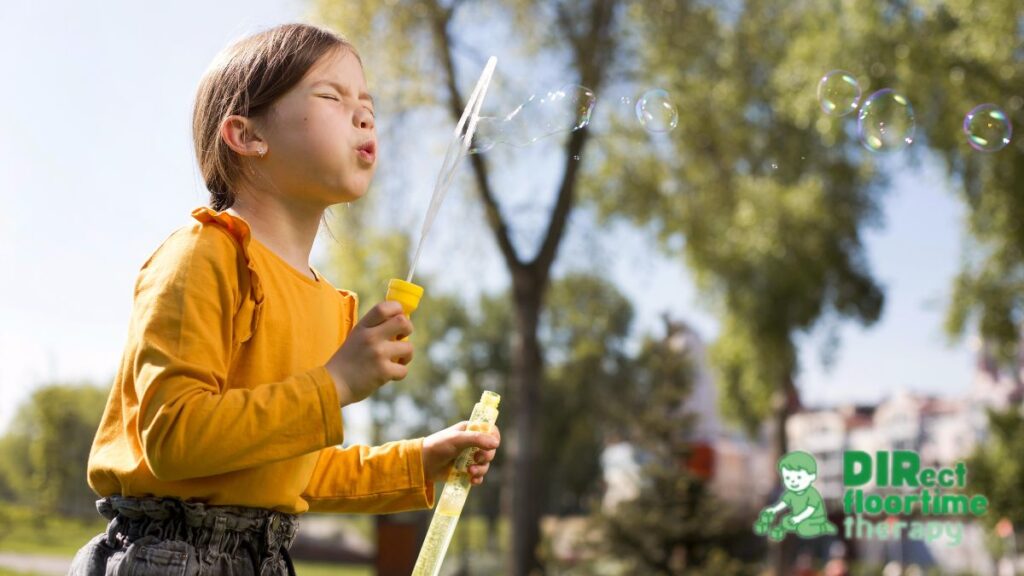
The DIRect Floortime Therapy approach is more than a therapy—it’s an invitation to step into a child’s world, connect through joy, and spark lifelong skills. From early shared smiles to complex conversations, each level of progress feels natural and deeply human. Families in New Jersey and beyond are seeing how this child-first model creates opportunities that last a lifetime.With growing research support, countless success stories, and a spirit that puts relationships at the heart of learning, DIRect Floortime Therapy shines as a path where play and progress go hand in hand. If you’re curious about how this approach could support your child, reach out to us today and take the first step toward building stronger connections and brighter futures. Isn’t that what every child deserves?
